Does West Terrace have too many car dealerships?
Adelaide’s West Terrace has become a hotspot for car showrooms and second-hand dealerships, prompting questions about whether the prime CBD land would be better used for apartments.

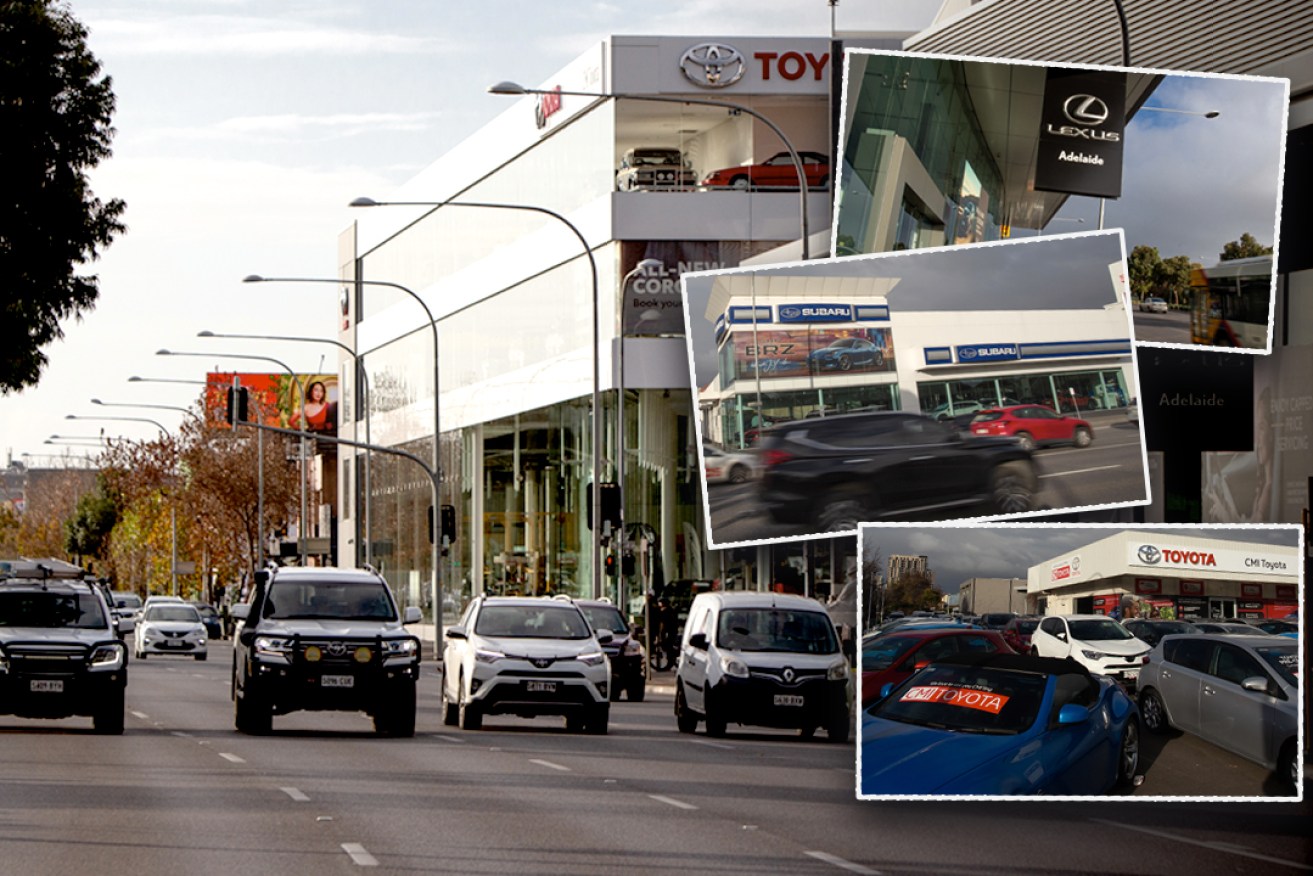
Adelaide's Lord Mayor says West Tce should be prime residential real estate but is instead dominated by car showrooms. Photos: Brett Hartwig/InDaily
The CBD’s 1.6km western boulevard spanning up to 10 lanes has no major apartment buildings or housing complexes – but it does have nearly a dozen car dealerships, including several high-end showrooms occupying prime corner blocks.
Lord Mayor Jane Lomax-Smith has raised concerns that West Terrace has become an “underutilised” site, suggesting if it wasn’t for the width of the road, “it would be one of the best places to live in the city”.
“It does seem a little odd that in a capital city in the quality of this, such a prime piece of real estate is a whole series of car yards – it’s always mystified me,” she said during a committee meeting about the development of council’s new City Plan.
“It seems to be that the growth has to be in the west… to me that has to be the epicentre of growth.”
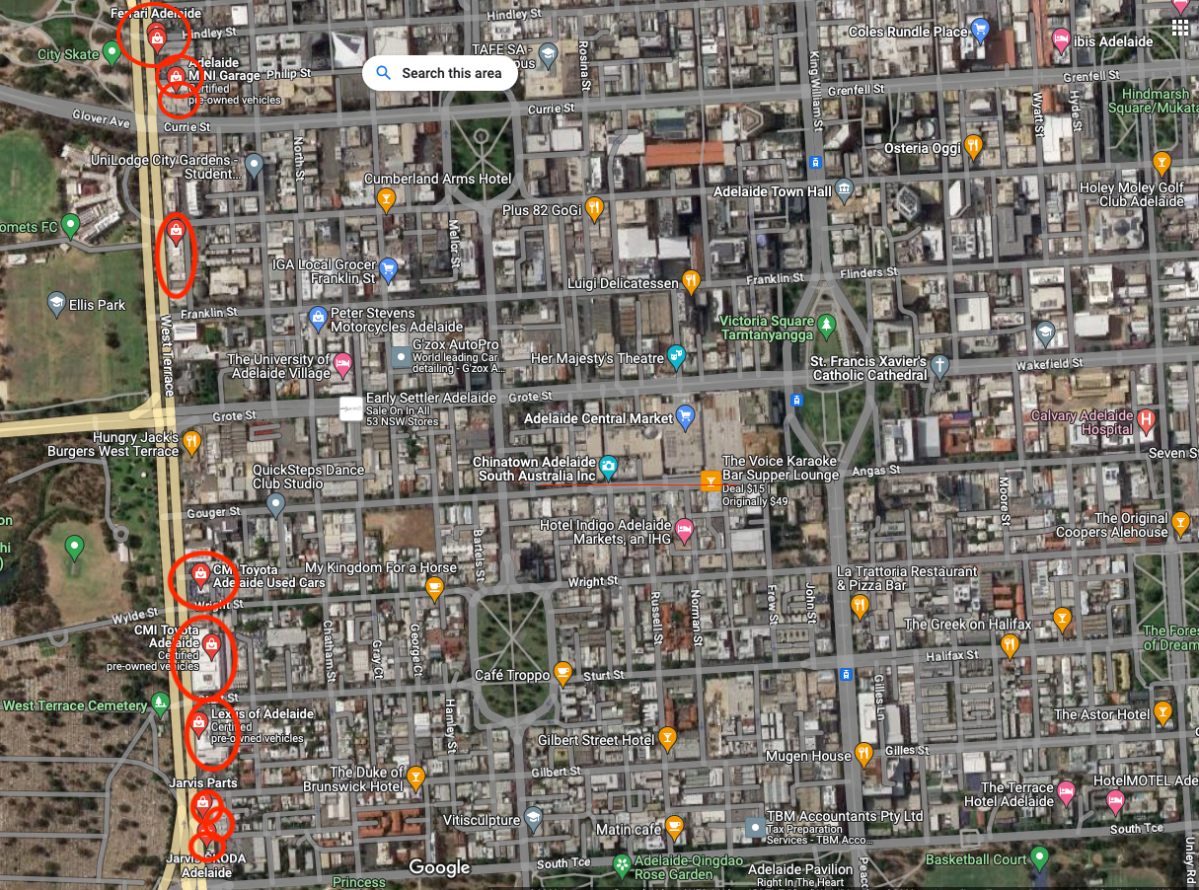
An aerial view of the number of car dealerships on West Terrace, circled in red. Image: Google Maps
Lomax-Smith told InDaily this week: “With a city-wide housing shortage and the advantage of inner-city living, the West Terrace precinct should be prime residential real estate.
“After all, it boasts walkable distances to city icons, park lands frontage and sea views – what more could you ask?”
The largest showroom on West Terrace is a three-level CMI Toyota Adelaide dealership on the corner of Sturt Street.
The prominent building has a 100-metre frontage along West Terrace, with a similarly sized Lexus showroom located just south of it.
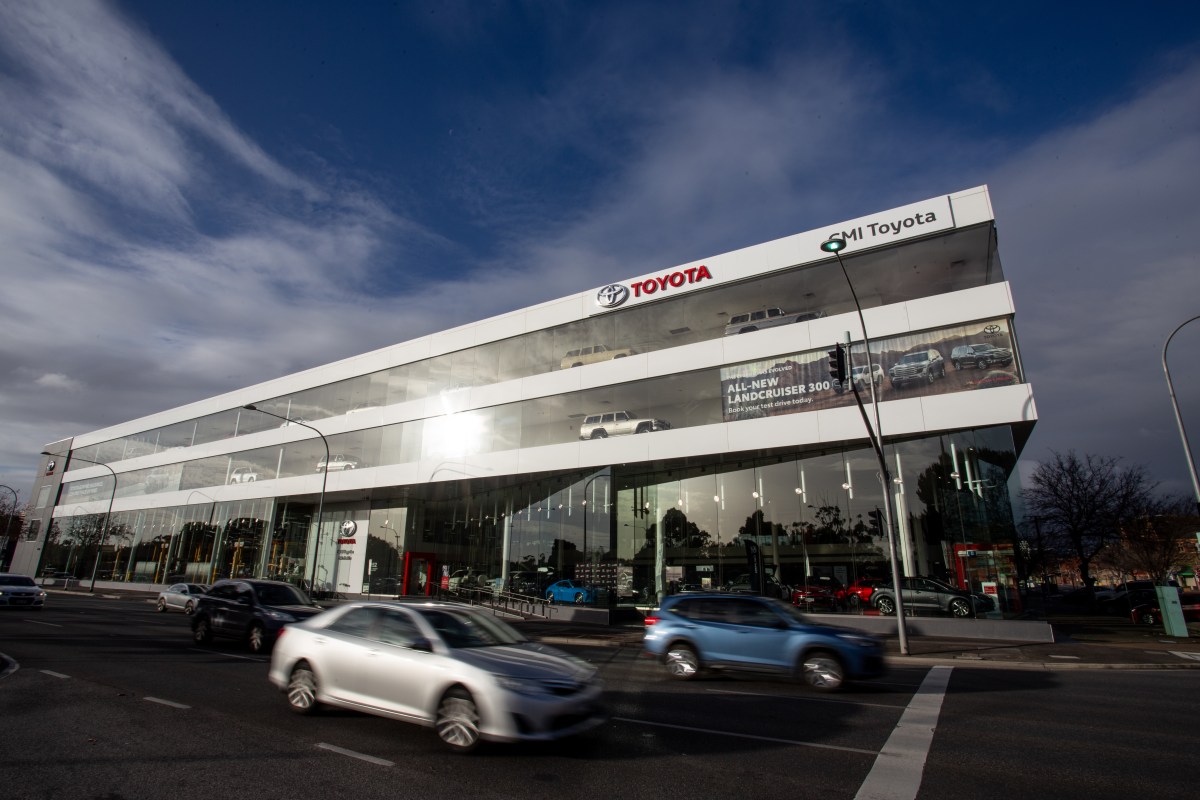
CMI Toyota Adelaide’s three-level showroom on West Terrace. Photo: Brett Hartwig/InDaily
Jarvis Cars has two dealerships – a Jarvis Škoda and Jarvis Subaru – at the southern end of West Terrace, just above the Rydges Hotel.
At the northern end, Adelaide BMW and Ferrari Adelaide occupy prime corner blocks – the former with Currie St and latter with Hindley Street – with a Mini Cooper dealership sandwiched between them.
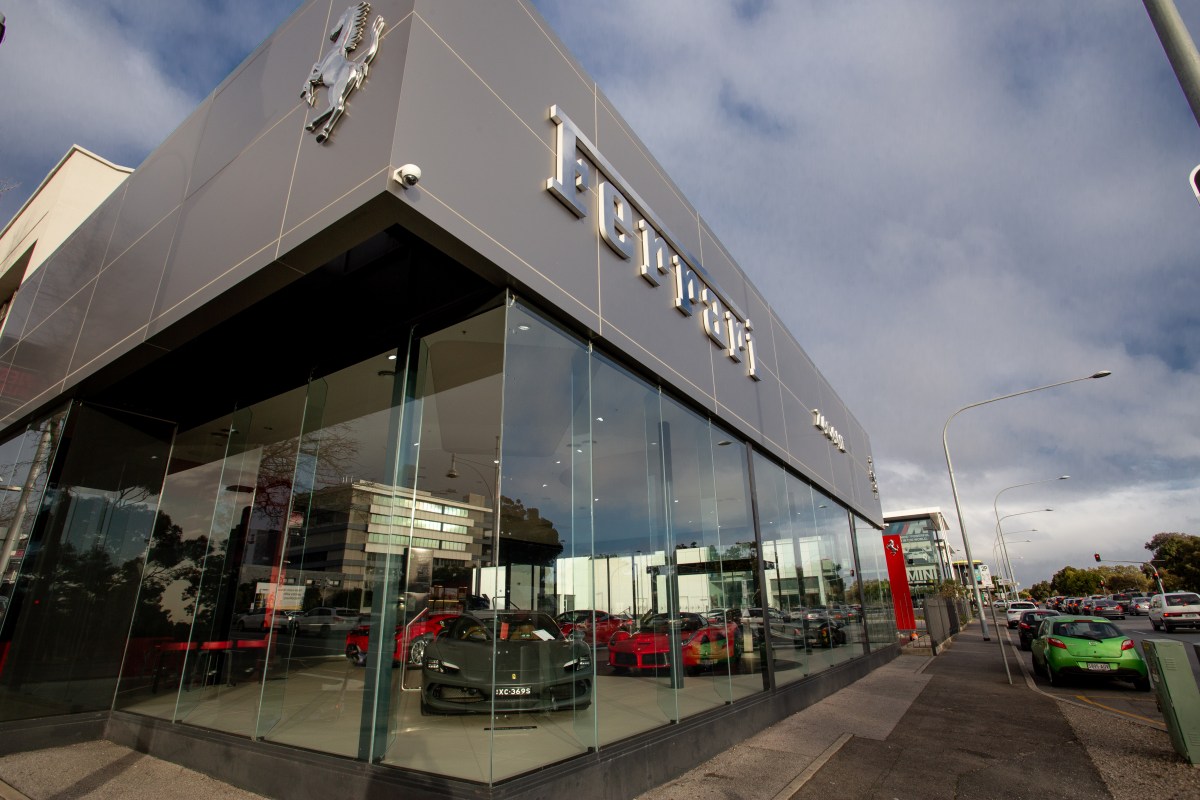
The Ferrari dealership on the corner of West Terrace and Hindley Street. Photo: Brett Hartwig/InDaily
CMI Toyota also has a second-hand outdoor car yard located between Gouger and Wright Street, while Newspot MG has two dealerships between Waymouth and Franklin Street.
“At some point, there are almost too many car yards because it dominates the streetscape,” said Cate Hart, Planning Institute of Australia SA division president.
“The development along West Terrace, the car yard approach, the sales room approach with their big bulky buildings, is now dominating the overall amenity of what really is the western boulevard of the city.
“It’s a key entry point for the city and it’s actually seen as the gateway.
“Whilst there’s probably no short answer in terms of are there too many (car dealerships), I think we’re reaching a point where they dominate the landscape and are having an impact on the way in which people see West Terrace as a boulevard to the city.”
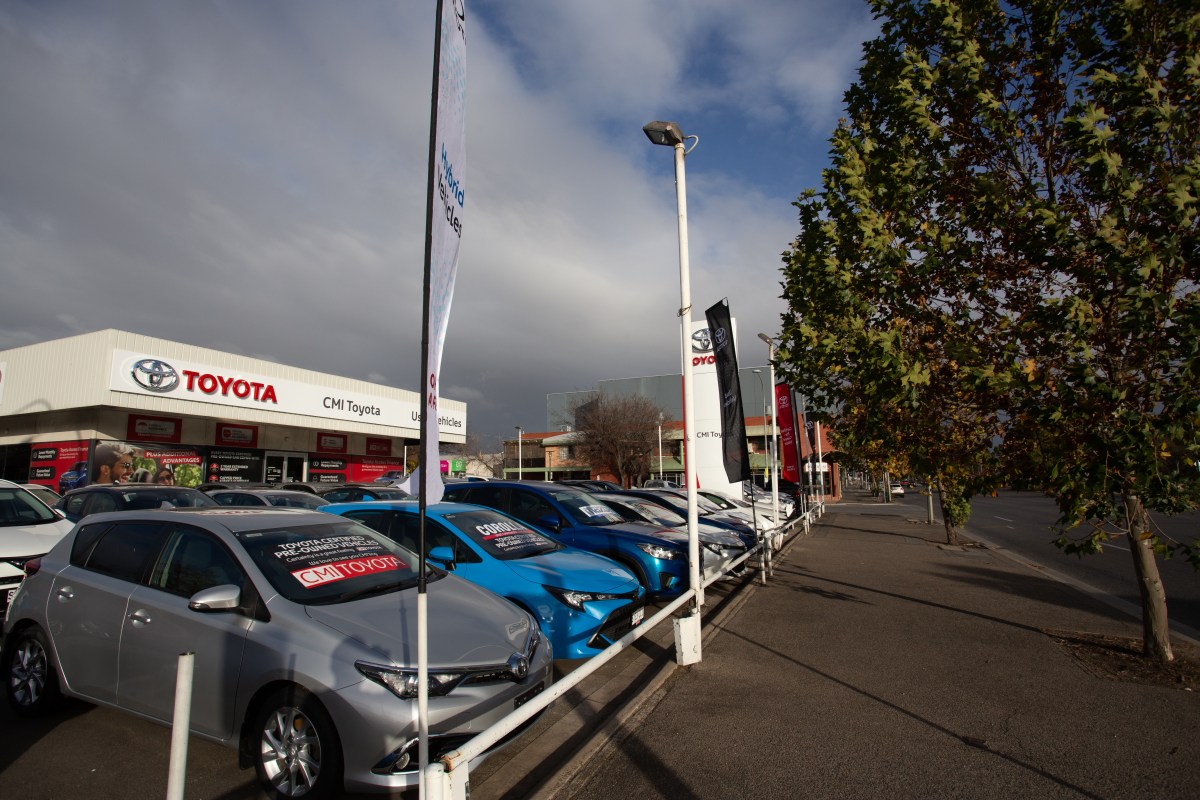
CMI Toyota’s used car dealership on the corner of West Terrace and Wright St. Photo: Brett Hartwig/InDaily
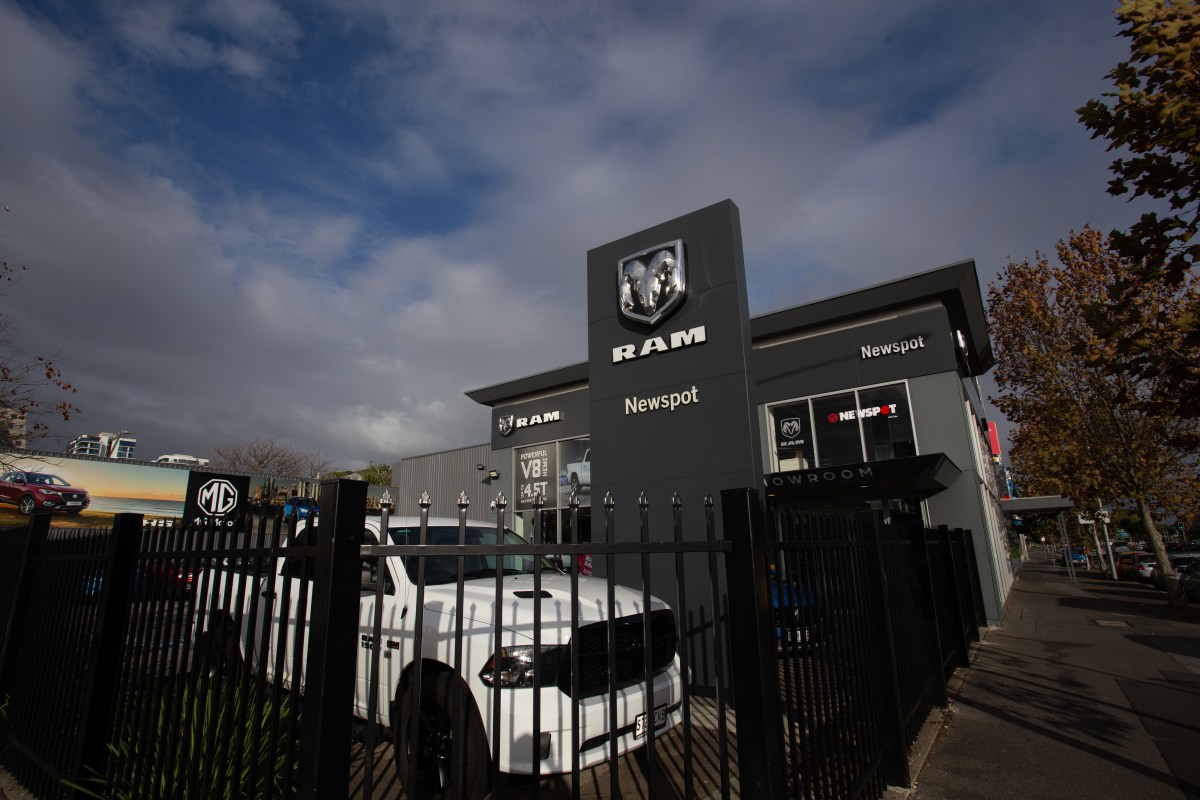
Newspot MG’s RAM dealership on the corner of West Terrace and Waymouth Street. Photo: Brett Hartwig/InDaily
Accompanying the cluster of car yards are two corner block petrol stations and two schools – Adelaide High School on the western side and St Mary’s College on the eastern side.
The land use along West Terrace puts it in stark contrast with the hospitality, housing and heritage which lines East Terrace and the range of activity on North Terrace, which the 30-Year Plan for Greater Adelaide earmarks as Adelaide’s “premier cultural boulevard”.
Hart said West Terrace “didn’t have a pre-existing character” nor “an amenity that people were trying to promote”, meaning it was easier for car dealers to move into the area and amalgamate land parcels into larger footprints.
She said the boulevard has “huge capacity for apartment-style living” but it would require policy leadership from Adelaide City Council.
“If you have a look in other cities, Melbourne in particular and even cities overseas, that sort of street frontage would automatically have residential,” she said.
“You’ve got good access to park lands, good access to recreation reserves… the link to the coast isn’t particularly far away and now of course it’s got access to the hospital and on South Terrace access to education – and you’ve got Adelaide High School right opposite.
“So, it actually is a really great location to promote higher end residential development if… the property values to amalgamate a site don’t go too high.”
Land along West Terrace is currently subject to the Capital City Zone, which has a desired outcome in the Planning Code of “high intensity and large-scale development with high street walls reinforcing the distinctive grid pattern layout of the city”.
The zone also specifies a preference for “active non-residential ground level uses”.
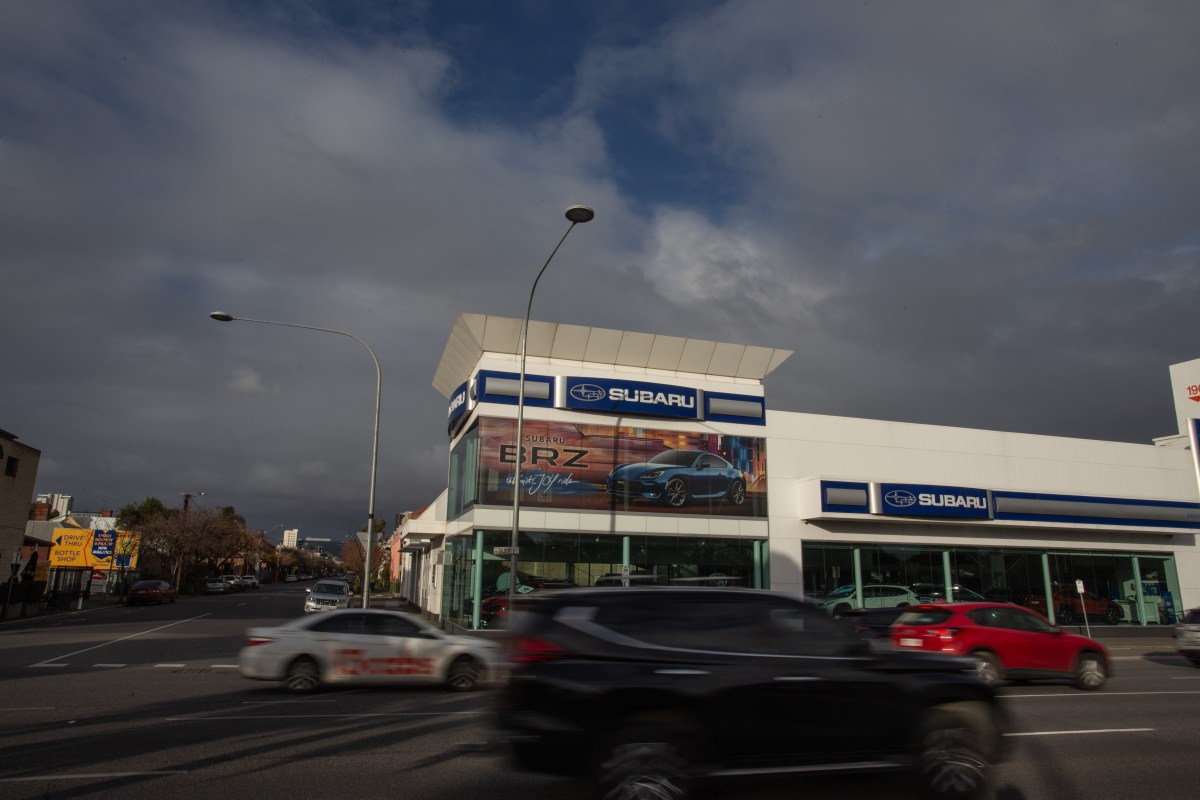
Jarvis Subaru at the southern end of West Terrace. It is one of two Jarvis dealerships on the CBD’s western boulevard. Photo: Brett Hartwig/InDaily
The southern portion of West Terrace is predominately zoned for a maximum building height of 28 metres and a minimum of 14 metres.
The northern portion between Franklin Steet and North Terrace is zoned for a 43 metre maximum – but the state’s planning authorities have previously shown a willingness to approve developments that significantly exceed this recommended limit.
Hart said the zoning would need to be reviewed by council, adding that the current buildings do not lend themselves particularly well to adaptive reuse.
“I think there are some sites along West Terrace that could be seen as opportunistic development sites that are coming to the end of their life,” she said.
“And we do have a push from Adelaide City Council to increase its residential population and actually sitting behind this zone, sitting behind the capital city zone, is… residential policy areas.
“The western side of the city actually has a high amount of residential development.
“So, the council could build on that foundation and say we actually see an opportunity here to have some really good residential development, the type that we’re seeing near East Terrace past Frome Road.”
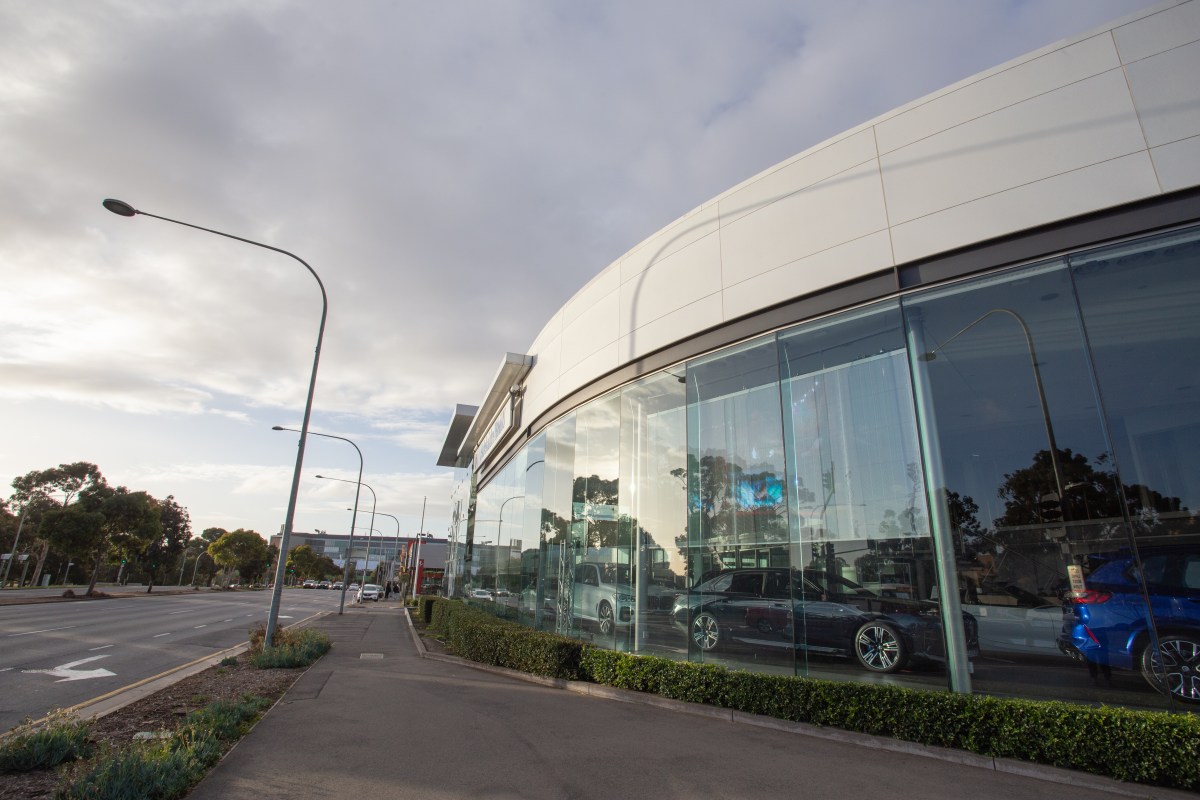
BMW Adelaide’s corner showroom on West Terrace and Currie Street. Photo: Brett Hartwig/InDaily
The Motor Trade Association (MTA) SA, which represents some car dealers in South Australia, said every capital city had clusters of dealerships.
“It is not uncommon for car dealerships to be located in close proximity to assist motorists easily choose from a range of options,” an MTA spokesperson said.
“Unlike private online and social media sales, licensed dealerships provide consumer protections and warranties where people can also inspect a car in person.
“The dealerships provide servicing and repairs for people who work and live in the city.”
A “State of the City Report” published by council last week projects the city’s population to grow from an estimated 26,120 residents in 2022 to 46,364 residents by 2041 – with the majority to be housed in medium- to high-density apartment blocks.
The population forecast is lower than a target set by the Lord Mayor at a business conference in May for 50,000 people to be living inside Adelaide by 2036 – the 200th anniversary of the foundation of the city.
Council’s new “City Plan”, led by design agency City Collective, is due for completion in June 2024.




